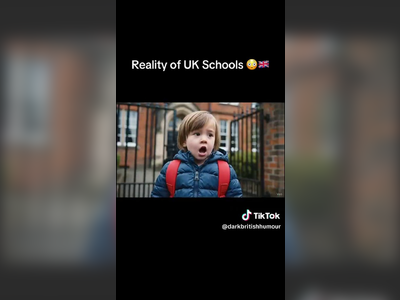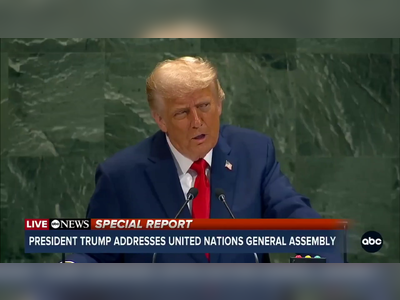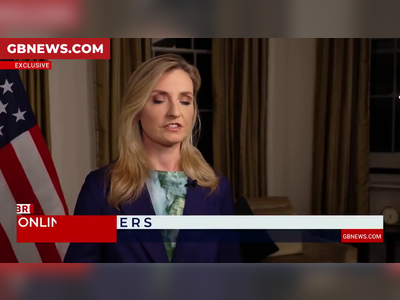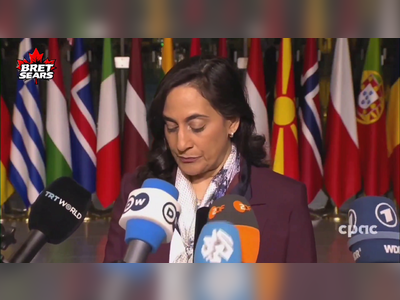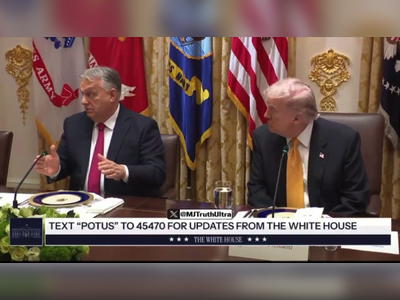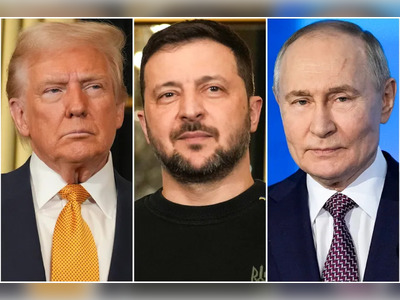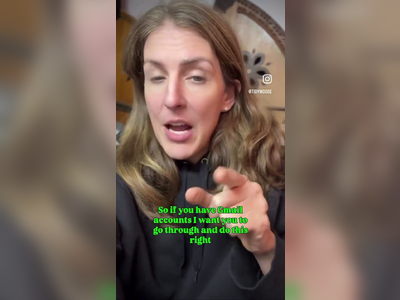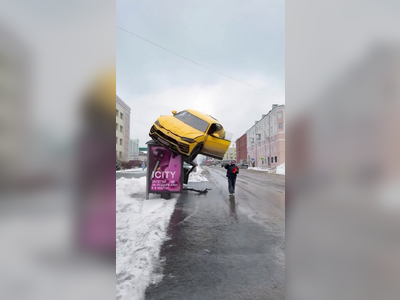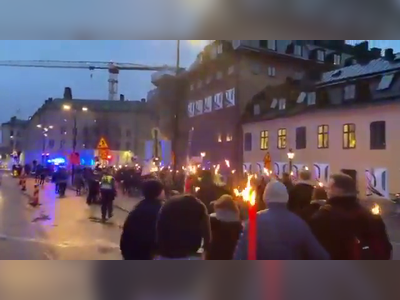Violence Erupts in Los Angeles Amid Immigration Protests and National Guard Deployment
Protests against ICE raids escalate as Trump sends National Guard to the city, prompting criticism from officials.
Protests in Los Angeles against the federal immigration agency, ICE, have escalated into violence over the past three days.
Thousands of demonstrators took to the streets on Sunday, responding to recent ICE raids that resulted in the detainment of several undocumented immigrants, including families with children.
The unrest intensified following the arrest of a prominent labor leader, David Huerta, who was actively opposing the raids.
In response to the increasing chaos, President Donald Trump authorized the deployment of the National Guard to the city despite official requests from California Governor Gavin Newsom for their withdrawal, arguing that their presence exacerbates tensions.
The governor condemned Trump's decision, labeling it as unhelpful, while Trump dismissed Newsom as ineffective, referring to Los Angeles Mayor Karen Bass as similarly inadequate.
The first contingent of approximately 300 members from the California National Guard’s 79th Infantry Brigade Combat Team arrived at key locations in Los Angeles on Sunday morning, with orders to secure federal property and personnel.
This deployment marks a significant federal intervention in a local crisis, reminiscent of rare occurrences in U.S. history when the National Guard has been sent against the wishes of state governors.
Throughout the protests, which began following the ICE operations on Friday, demonstrators have clashed with security forces.
Protesters have reportedly blocked sections of highways, set vehicles ablaze, and engaged in violent confrontations, throwing concrete blocks and fireworks at law enforcement.
Law enforcement has responded with riot control measures, including the use of tear gas and rubber projectiles.
In a significant incident, an FBI reward of up to $50,000 was offered for information leading to the identification of a masked protester who allegedly threw objects at law enforcement vehicles during Saturday’s protest, causing damage to federal property.
Mayor Karen Bass expressed her concerns regarding the deployment of the National Guard, arguing that the Los Angeles Police Department was capable of managing the protests without military assistance.
She emphasized the constitutional right to free speech while condemning the violence associated with the demonstrations.
Meanwhile, Governor Newsom formally requested the Secretary of Defense, Pete Hegseth, to withdraw the National Guard from California.
Hegseth suggested the possible use of Marine forces if necessary, an idea Newsom dismissed as irrational.
Historically, the last instance of federal intervention in state matters in this manner occurred 60 years ago when President Lyndon B. Johnson dispatched the National Guard to Alabama during civil rights demonstrations.
The tensions between Trump and Newsom have also been underscored by disputes over federal funding, with Newsom threatening to withhold federal tax contributions if the Trump administration proceeds with reviewing federal allocations to California.
California recently emerged as the world’s fourth-largest economy, surpassing Japan after its GDP reached $4.1 trillion in April, collectively drawing attention to its economic significance in global discussions.
Thousands of demonstrators took to the streets on Sunday, responding to recent ICE raids that resulted in the detainment of several undocumented immigrants, including families with children.
The unrest intensified following the arrest of a prominent labor leader, David Huerta, who was actively opposing the raids.
In response to the increasing chaos, President Donald Trump authorized the deployment of the National Guard to the city despite official requests from California Governor Gavin Newsom for their withdrawal, arguing that their presence exacerbates tensions.
The governor condemned Trump's decision, labeling it as unhelpful, while Trump dismissed Newsom as ineffective, referring to Los Angeles Mayor Karen Bass as similarly inadequate.
The first contingent of approximately 300 members from the California National Guard’s 79th Infantry Brigade Combat Team arrived at key locations in Los Angeles on Sunday morning, with orders to secure federal property and personnel.
This deployment marks a significant federal intervention in a local crisis, reminiscent of rare occurrences in U.S. history when the National Guard has been sent against the wishes of state governors.
Throughout the protests, which began following the ICE operations on Friday, demonstrators have clashed with security forces.
Protesters have reportedly blocked sections of highways, set vehicles ablaze, and engaged in violent confrontations, throwing concrete blocks and fireworks at law enforcement.
Law enforcement has responded with riot control measures, including the use of tear gas and rubber projectiles.
In a significant incident, an FBI reward of up to $50,000 was offered for information leading to the identification of a masked protester who allegedly threw objects at law enforcement vehicles during Saturday’s protest, causing damage to federal property.
Mayor Karen Bass expressed her concerns regarding the deployment of the National Guard, arguing that the Los Angeles Police Department was capable of managing the protests without military assistance.
She emphasized the constitutional right to free speech while condemning the violence associated with the demonstrations.
Meanwhile, Governor Newsom formally requested the Secretary of Defense, Pete Hegseth, to withdraw the National Guard from California.
Hegseth suggested the possible use of Marine forces if necessary, an idea Newsom dismissed as irrational.
Historically, the last instance of federal intervention in state matters in this manner occurred 60 years ago when President Lyndon B. Johnson dispatched the National Guard to Alabama during civil rights demonstrations.
The tensions between Trump and Newsom have also been underscored by disputes over federal funding, with Newsom threatening to withhold federal tax contributions if the Trump administration proceeds with reviewing federal allocations to California.
California recently emerged as the world’s fourth-largest economy, surpassing Japan after its GDP reached $4.1 trillion in April, collectively drawing attention to its economic significance in global discussions.
AI Disclaimer: An advanced artificial intelligence (AI) system generated the content of this page on its own. This innovative technology conducts extensive research from a variety of reliable sources, performs rigorous fact-checking and verification, cleans up and balances biased or manipulated content, and presents a minimal factual summary that is just enough yet essential for you to function as an informed and educated citizen. Please keep in mind, however, that this system is an evolving technology, and as a result, the article may contain accidental inaccuracies or errors. We urge you to help us improve our site by reporting any inaccuracies you find using the "Contact Us" link at the bottom of this page. Your helpful feedback helps us improve our system and deliver more precise content. When you find an article of interest here, please look for the full and extensive coverage of this topic in traditional news sources, as they are written by professional journalists that we try to support, not replace. We appreciate your understanding and assistance.
